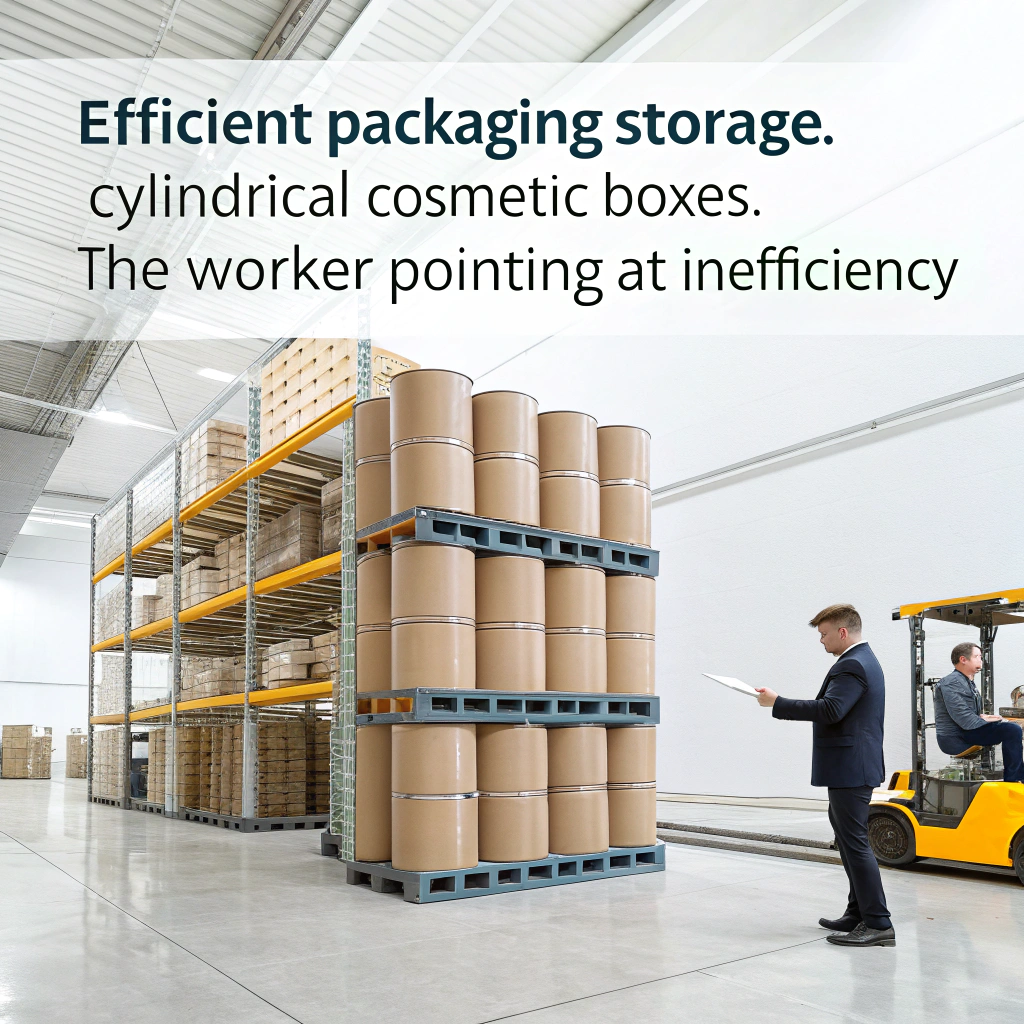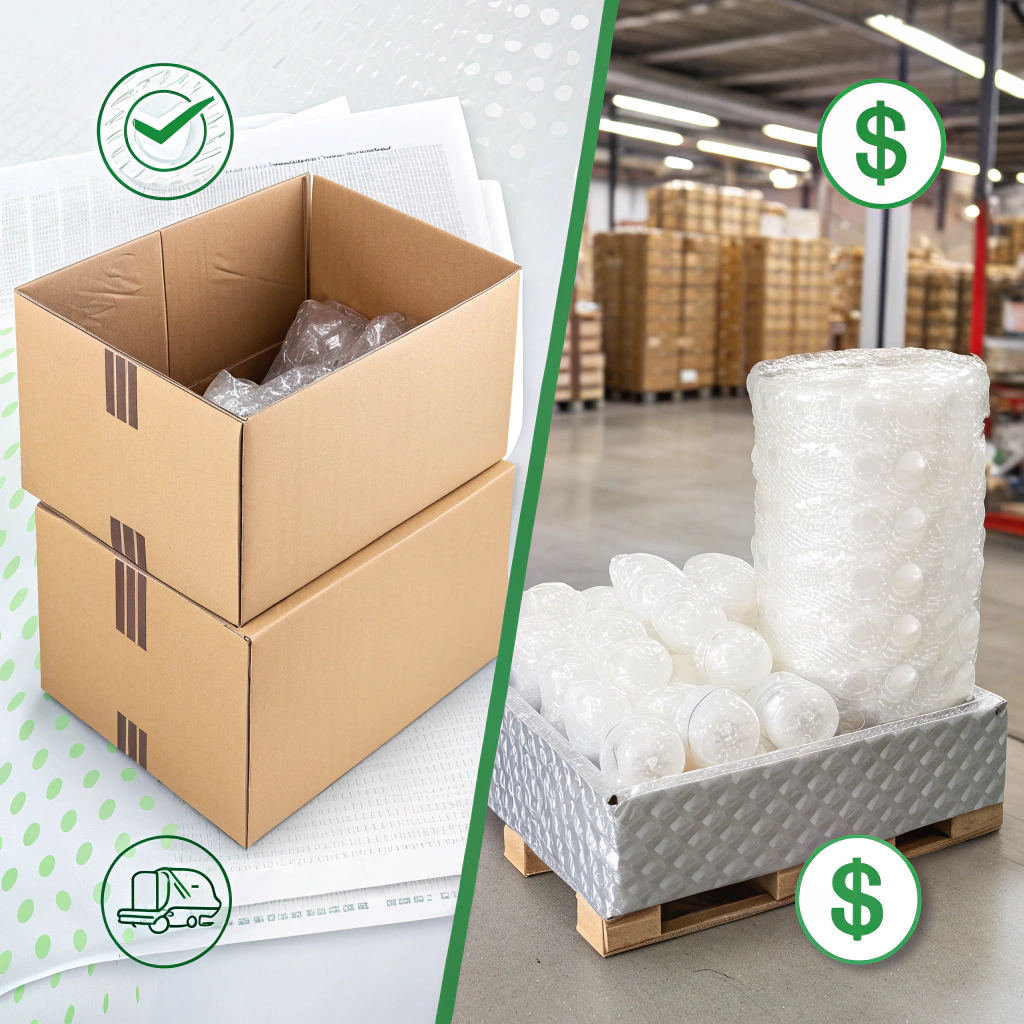Hidden Packaging Costs: The True Price of Your Package
When businesses calculate packaging costs, most focus solely on material prices. However, this narrow view can lead to budget surprises and unprofitable decisions. Hidden packaging costs frequently represent 40% to 60% of total packaging expenses.
The Costs Nobody Sees Coming
1. Storage and Logistics Costs
The space your empty packaging occupies is money. Boxes that don’t stack efficiently, materials requiring special storage conditions, or packages that significantly increase final product volume directly impact your logistics costs.
Real impact: A cosmetics company discovered their elegant cylindrical boxes occupied 300% more warehouse space than equivalent rectangular boxes, increasing storage costs by $15,000 monthly.

Inefficient packaging shapes can triple your storage costs – rectangular designs typically offer 60% better space utilization than cylindrical alternatives.
2. Waste and Shrinkage
Packaging materials have waste rates ranging from 5% to 15% depending on production processes. Additionally, defective packages, printing errors, and last-minute design changes generate additional costs rarely accounted for initially.
3. Labor Costs
The time required to assemble, fill, and seal each package is a direct cost. Complex designs requiring multiple assembly steps may seem economical in materials but prove expensive in production time.
Practical example: Switching from a package requiring 4 assembly steps to one requiring only 2 steps can save up to $0.50 per unit in labor costs.
Transportation Costs: Beyond Weight
Dimensional Optimization
Carriers charge not just by weight, but by dimensional weight. A lightweight but bulky package can cost more to ship than a heavier but compact one. The typical formula is: (length × width × height) ÷ dimensional factor = billable weight.
Additional Protection Costs
If your primary packaging doesn’t offer sufficient protection, you’ll need additional materials like:
- Protective fill
- Secondary boxes
- Cushioning materials
- Special sealing
These “insurance” measures against damage can double the real packaging cost.

Poor primary packaging protection can double shipping costs through required secondary materials and dimensional weight penalties.
Supply Chain Impact
Inventory Costs
Custom packaging requires higher minimum orders, meaning greater inventory investment. If your design changes, you may be stuck with obsolete stock representing total loss.
Regulatory Compliance Costs
Different markets have different regulations. Packaging that works locally may require costly modifications for export:
- Additional certifications
- Specific labeling
- Alternative materials
- Compliance testing
Sustainability Costs
Beyond Recycling
Real sustainability includes:
- Carbon footprint in transportation
- Water consumption in production
- Manufacturing energy
- End-of-life disposal costs
Environmental Regulations
Many countries are implementing taxes on unsustainable packaging and extended producer responsibility systems that can add significant costs.
How to Calculate Real Cost
Comprehensive Cost Formula
Total Cost = Materials + Production + Storage + Transportation + Labor + Waste + Compliance + Sustainability
Analysis Tools
- Complete Life Cycle Analysis: Evaluates all costs from production to final disposal
- Dimensional Cost Modeling: Simulates different transportation scenarios
- Waste Audits: Measures and reduces losses at each stage
Strategies to Reduce Hidden Costs
Design for Efficiency
- Stackable designs: Maximize warehouse space utilization
- Modular systems: Reduce inventory complexity
- Right-sizing: Match package size to product needs
- Multi-use designs: Serve multiple product lines
Technology Integration
- Automated packaging lines: Reduce labor costs
- Digital printing: Minimize waste from setup
- Smart materials: Self-indicating freshness or damage
- Predictive analytics: Optimize inventory levels
Supplier Partnerships
Work with packaging suppliers who understand total cost of ownership, not just material costs. The cheapest material often creates the most expensive solution.

True packaging costs extend far beyond materials – smart businesses analyze all seven cost components for accurate budgeting.
Case Study: The $50,000 Mistake
A premium skincare brand chose elegant glass jars for their luxury positioning. Material costs were only 15% higher than plastic alternatives. However, hidden costs included:
- Special shipping requirements: +$2.50 per unit
- Higher breakage rates: 8% loss versus 1% for plastic
- Dimensional weight penalties: 40% shipping cost increase
- Special handling labor: +$0.75 per unit
The “15% premium” actually cost 180% more than plastic packaging, forcing a complete redesign after six months.
The Bottom Line
Hidden packaging costs can make or break profitability. Smart businesses invest in comprehensive cost analysis upfront rather than discovering expensive surprises later. Remember: the cheapest package isn’t always the most cost-effective solution.
Before finalizing your next packaging decision, ask yourself: “Have I accounted for ALL costs?” Your bottom line depends on getting this calculation right.
